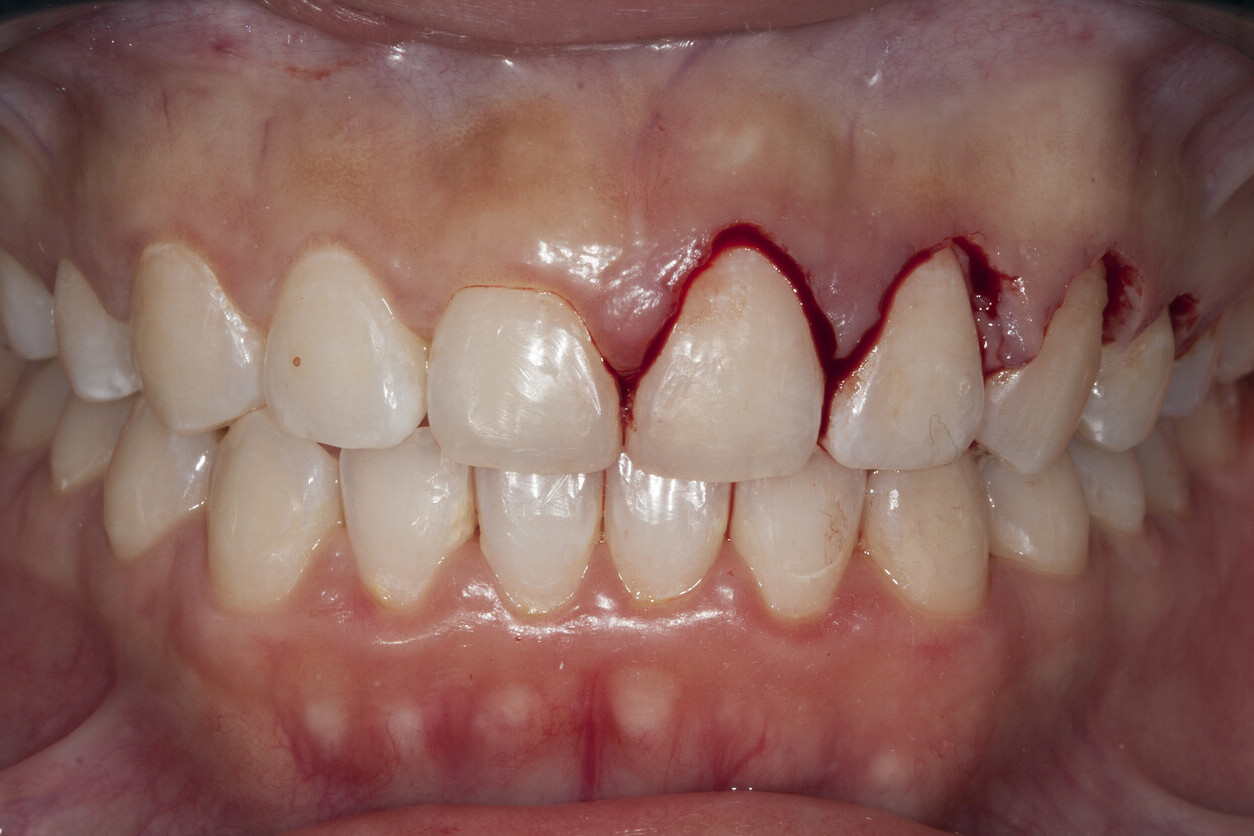
What is a gingivectomy? A gingivectomy is a dental procedure where a dentist removes part of the gums. This can be done to treat gum disease or to improve the look of your smile. Sometimes, gums can grow too much and cover parts of your teeth, making it hard to clean them properly. By removing some of the gum tissue, your teeth can stay healthier. This procedure can also help if you have pockets between your teeth and gums that trap food and bacteria. Gingivectomy is usually done with local anesthesia, so you won't feel pain during the process. Recovery is typically quick, and proper care can lead to great results.
What is Gingivectomy?
Gingivectomy is a dental procedure involving the removal of gum tissue. It's often performed to treat gum disease or improve the appearance of the gums. Here are some fascinating facts about this procedure.
-
Gingivectomy is one of the oldest surgical procedures in dentistry, dating back to ancient times.
-
The term "gingivectomy" comes from the Latin words "gingiva" (gums) and "ectomy" (removal).
-
Dentists use gingivectomy to remove diseased gum tissue and reduce pockets between the teeth and gums.
Why is Gingivectomy Performed?
Understanding the reasons behind gingivectomy can help demystify its importance. Here are some key reasons why this procedure is performed.
-
Gingivectomy is often necessary for patients with severe gum disease that doesn't respond to other treatments.
-
It can also be performed for cosmetic reasons, such as reshaping the gums to create a more attractive smile.
-
Dentists may recommend gingivectomy to remove excess gum tissue caused by certain medications.
The Procedure
The process of gingivectomy involves several steps. Knowing what to expect can ease any anxiety about the procedure.
-
Before the procedure, the dentist will numb the area with local anesthesia to ensure comfort.
-
The dentist uses a scalpel or laser to remove the excess gum tissue.
-
After the tissue is removed, the area is cleaned and disinfected to prevent infection.
-
The dentist may place a protective dressing over the gums to aid healing.
Recovery and Aftercare
Post-procedure care is crucial for a smooth recovery. Here are some important aspects of gingivectomy aftercare.
-
Patients may experience some discomfort and swelling, which can be managed with pain relievers and ice packs.
-
It's important to follow a soft food diet for a few days to avoid irritating the gums.
-
Good oral hygiene is essential to prevent infection and promote healing.
-
Dentists often recommend using a special mouthwash to keep the area clean.
Benefits of Gingivectomy
Gingivectomy offers several benefits, both health-related and cosmetic. Here are some of the advantages.
-
Removing diseased gum tissue can help prevent further damage to the teeth and gums.
-
The procedure can reduce gum pockets, making it easier to clean the teeth and maintain oral hygiene.
-
For those undergoing the procedure for cosmetic reasons, it can result in a more symmetrical and attractive smile.
Risks and Complications
Like any surgical procedure, gingivectomy comes with potential risks. Being aware of these can help patients make informed decisions.
-
There is a risk of infection if proper aftercare is not followed.
-
Some patients may experience prolonged bleeding after the procedure.
-
In rare cases, the gums may not heal properly, leading to further complications.
Alternatives to Gingivectomy
While gingivectomy is effective, there are alternative treatments for gum disease and cosmetic gum issues.
-
Scaling and root planing is a non-surgical procedure that can treat gum disease.
-
Crown lengthening is another surgical option for reshaping the gums.
-
Laser therapy can be used to remove diseased gum tissue with minimal discomfort.
Interesting Facts
Here are some additional intriguing facts about gingivectomy that you might not know.
-
Gingivectomy can sometimes be performed using laser technology, which can reduce pain and speed up recovery.
-
The procedure is often used in conjunction with other dental treatments, such as dental implants or orthodontics.
-
Some patients undergo gingivectomy to improve the fit of dentures or other dental appliances.
Gingivectomy: Key Takeaways
Gingivectomy, a common dental procedure, can significantly improve oral health. This surgery removes excess gum tissue, helping treat gum disease and improve the appearance of your smile. It's often recommended when other treatments haven't worked. Recovery is usually quick, with most people returning to normal activities within a week. Maintaining good oral hygiene post-surgery is crucial for healing and preventing future issues.
Understanding the benefits and risks can help you make informed decisions about your dental care. Always consult with a qualified dentist to determine if this procedure is right for you. With proper care, a gingivectomy can lead to healthier gums and a brighter smile. Remember, your oral health is a vital part of your overall well-being. Stay proactive, and don't hesitate to seek professional advice when needed.
Was this page helpful?
Our commitment to delivering trustworthy and engaging content is at the heart of what we do. Each fact on our site is contributed by real users like you, bringing a wealth of diverse insights and information. To ensure the highest standards of accuracy and reliability, our dedicated editors meticulously review each submission. This process guarantees that the facts we share are not only fascinating but also credible. Trust in our commitment to quality and authenticity as you explore and learn with us.
